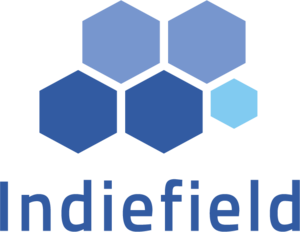A guide to B2B ethnographic research
Ethnographic market research is the process of observing the behaviour of your customers first hand. It is about stepping into your customers’ shoes and seeing what it is really like to be them.
To be successful, ethnographic research needs to be planned thoroughly in advance. The following 10 steps are a useful starting point for what needs to be considered before, during and after carrying out ethnographic research:
Before
1. Recruitment
When recruiting respondents for an ethnographic study it is important to ensure that they understand everything that is required of them so that there are no misunderstandings or surprises on the day. At the recruitment stage you need to explain:
- How long the observation period will be – will it be a couple of hours, a day or longer?
- That someone will be walking around and observing their workplace – Will the ethnographer be able to walk around freely or are there any health and safety restrictions that will stop them having access to certain areas?
- That there will be the need to ask questions and take photographs – Are the respondents happy to share their views in face-to-face interviews? Are respondents happy to let the ethnographer take pictures?
2. Choosing your ethnographer
Don’t assume that ethnography can be carried out by just anyone. Ethnographers need to have good observation skills and be able to spot and interpret the smallest behaviours. Once you have chosen your ethnographer it is also important to explain what is expected of them. Do they need to take notes, carry out interviews, take pictures? They also need to have a good understanding of what the research will be used for. This will help them to collect findings that are relevant and useful to the research.
3. Ethnographic materials
In preparation for the ethnography, it is useful to prepare some materials for the ethnographer. These materials can include entry interview questionnaires, exit interview questionnaires and a checklist to guide the ethnographer throughout the day. Having these materials prepared will give the ethnographer guidance and allow you to collect answers to specific questions you may have.
During
4. Entry interview
Entry interviews are a good way to gather information at the very start of the day and can give you ideas for things to look out for. For example, asking about pain points in the entry interview can highlight problem areas for the respondent that you can follow up on during the day.
5. Observation
When carrying out ethnographic research, you shouldn’t just stay in one place during the visit. You should walk around and observe the business from different angles. You shouldn’t feel afraid to just observe what is happening. You should be a fly on the wall and blend into the background so that the respondents forget that you are there.
6. Checklist and notes
Having a pre-prepared checklist can help to guide you throughout the day. However, you shouldn’t just focus on this. You need to pay attention to everything that happens around you as everything has the potential to be an important insight. It is also important to always look for deeper meanings in why something is done the way it is. Always ask ‘Why?’ You should also take notes during the observation period. Don’t rely on recordings or memory alone as notes taken throughout the day could become useful later on.
7. Pictures
Take pictures throughout the day as this is a good way of capturing data. Going over them later might trigger insights that were not obvious during the observation.
8. Exit interview
Conducting an exit interview with the respondent is a useful way to get responses to any unanswered questions or to follow up on any insights that have been observed throughout the day. It is also a good way of closing the observation period and thanking the respondents for taking part.
After
9. Final notes
On finishing the ethnography, it is a good idea to take some final notes of the main themes and important points that were raised during the day. It is a good idea to do this straight after the observation is completed, while everything is still fresh in your mind. This makes sure that important points are not forgotten.
10. Analysis
The analysis of ethnographic data can be challenging. A good starting point is to read through the interviews and notes and highlight any important themes. The next step is to use pictures to illustrate the important points. Pictures add an extra layer of insight and provide evidence for the analysis.
Jennifer Strange is a research manager at B2B International

We hope you enjoyed this article.
Research Live is published by MRS.
The Market Research Society (MRS) exists to promote and protect the research sector, showcasing how research delivers impact for businesses and government.
Members of MRS enjoy many benefits including tailoured policy guidance, discounts on training and conferences, and access to member-only content.
For example, there's an archive of winning case studies from over a decade of MRS Awards.
Find out more about the benefits of joining MRS here.











0 Comments